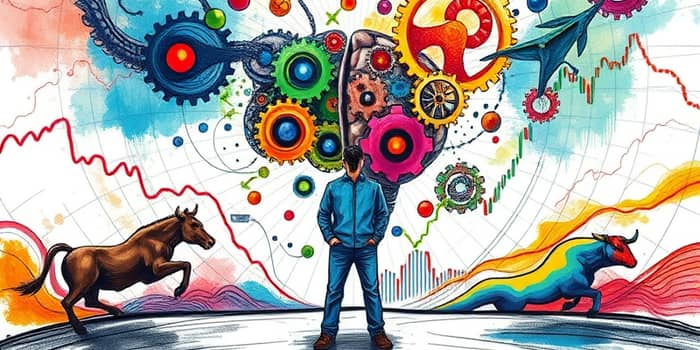
Traditional investment theories assume that markets and their participants operate under the banner of rationality, where decisions follow logically from available data. But real-world markets often stray from these ideals, exposing a rich tapestry of human emotions, mental shortcuts, and cultural influences that drive asset prices to extremes.
By uncovering the hidden forces of human psychology, investors can gain a critical advantage, learning to anticipate market swings, avoid common pitfalls, and consider their own cognitive blind spots. This article delves into the core principles of behavioral finance and offers actionable insights to harness the behavioral edge in investment decision-making.
Below, we explore the most prominent biases that tug at investors’ judgments and often override cold, hard logic:
Behavioral finance rests on foundational theories that blend psychology and economics, providing a lens to understand how individuals evaluate risk and rewards. Two frameworks stand out in explaining deviations from traditional models:
These models reveal why investors default to gut reactions under pressure and why framing or reference points can drastically alter choices—even when objective data remains unchanged.
Market volatility can trigger intense emotional reactions that diverge sharply from calculated strategy. Fear and greed often dominate headlines, yet their true influence is deeper and more persistent than casual observers realize.
Sharp price movements evoke visceral responses, with many participants shifting from strategic planning to survival instincts. These shifts can create persistent market volatility patterns, as waves of selling lead to lower prices, triggering further fear-driven exits.
Not all investors are equally susceptible to the biases described above. Several factors modulate their intensity and impact:
Empirical studies substantiate the real-world impact of behavioral patterns:
A survey of 558 Vietnamese Gen Z investors found that overconfidence, fear of missing out, representativeness bias, and risk attitude significantly influenced investment intentions, while framing effects and herding showed no statistical significance.
Further research by Barber & Odean using brokerage data revealed that retail investors who trade based on overconfidence underperform buy-and-hold benchmarks by approximately 2% per year, after accounting for transaction costs. Nobel Prize laureates Kahneman and Tversky demonstrated experimentally that loss aversion can be twice as strong as the pleasure derived from equivalent gains, a clear departure from the predictions of classical utility theory.
Armed with these insights, advisors and individual investors can adopt strategies to mitigate bias and align decisions with long-term objectives:
Although behavioral finance has grown rapidly, significant questions remain unanswered. Most studies examine single biases in isolation; yet, real decisions often reflect a web of interacting distortions. Research in emerging markets, particularly on how digital platforms and social networks intensify biases, is still in its infancy. Understanding these dynamics will pave the way for more robust models that can predict market anomalies and guide policy interventions.
By embracing the insights of behavioral finance, investors can transcend the limitations of traditional models, anticipate the hidden drivers of market movements, and cultivate strategies that leverage human psychology rather than fall victim to it. The true behavioral edge lies not only in recognizing our own biases but in systematically integrating these lessons into every investment decision.
References





